The Crimea as part of the Russian and Soviet Empires
Soon after it’s integration into the Russian Empire the Crimea started to attract the Russian nobility. The climate, the combination of mountains and sea, the romantic coastal rock formations pleased anyone who could afford to spend his summer and other holidays there. The nature and the climate of the Crimea are also very healthy and favorable to the healing of various diseases.
In the 19th century numerous palaces were built on the southern coast. Apart from the nobilty Crimea also turned into one of the favorite places for artists: musicians, poets, writers, painters, who sought recreation and inspiration from the ouitstanding beauty and variety of this very special area.
Yalta
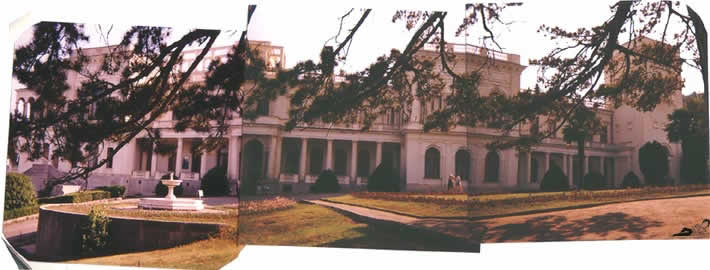 |
The Livadia-palace, where the Conference of Yalta took place in 1945 |
The Livadia-palace in Yalta was the summer residence of the Russian tsars. It was built in the second half of the 19th century. After the revolution is was turned into a sanatorium.
In February of 1945 the palace served as the scene for the conference of Yalta, and one of it’s parts also as a residence for president Roosevelt and the other members of the US delegation. It was a considerable achievement of the Soviet government to provide the infrastructure and lodging for this conference as the German army had only been defeated in the Crimea some months earlier and the war had certainly left it’s trace in this part of Soviet Union, too. One of the reasons why the Soviet leadership wanted the conference to take place in Yalta was to give the British and American politicians an idea of the massive destructions the war had caused to their country.
Much has since then been written on the Conference of Yalta and most analysts agree that president Roosevelt was weak and sick and therefore made too many concessions to Stalin. This point of view is both wrong and blindfolded. Franklin Delano Roosevelt in Yalta pursued the same politics toward Soviet Union he had followed ever since he came to power in 1933. It was only during his first term and due to his political convictions that the USA finally acknowledged Soviet Union as a state and established diplomatic relations with it. Roosevelt had a political vision of a world system based on cooperation as the only possibility to establish a lasting global peace and things would have looked different for the citizens both in the Soviet sphere of influence and in Western states had his successors not opted for confrontation and built up the balance of terror that characterized the era of Cold War. President Roosevelt enjoys a favorite place in the memory of the Russian people as one of the few influential western politicians with sympathy towards their country, and the main street of Yalta was named after him.
Second, one should always bear in mind the military events that were the background of the Conference of Yalta. Soviet Union had borne the main weight of World War II. Most of European Russia, the most densely populated and most industrialized part of the country, was in shambles. 20 million Soviet citizens died in the war, which is by far the highest number of victims in any of the involved countries. Despite of these desastrous blows inflicted on this country the German army was defeated in Russia, not in Normandy or Italy – though the assistance of the Western powers to Soviet Union should not be underestimated. Still, the decisive battle took place in Stalingrad. And the Red Army pressed on ever since. By February 1945 the Soviet troops were standing on the east banks of the Wisla, in Poland. Even though in the last weeks of the war the German leadership decided to concentrate all resistance on the Eastern front and let the American and British troops march through in the West unhindered it was the Red Army that first entered Berlin, and not the Western allies.
Therefore, the British and American delegations in Yalta had to face the facts: If they wanted to defeat Fascist Germany they had to cooperate with the Soviet leadership. They were in no position to exercise the pressure the advocates of Cold War afterwards would have liked them to impose on the later "enemy".
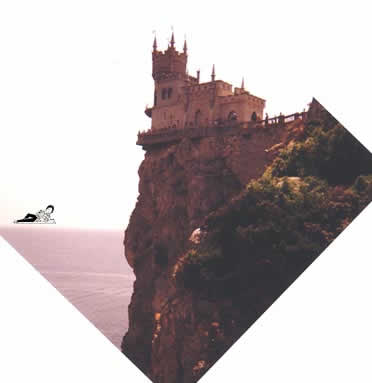 |
The "Swallow’s Nest", one of the numerous castles and palaces that were built on the Crimea before the revolution. It has become a kind of symbol for the Crimean architecture.
The "Swallow’s Nest" was built by a wealthy German who was in oil business. As rumours go, it was a kind of love nest for a mistress of his. |
|
View from the "Swallow’s Nest" into the small bay below | 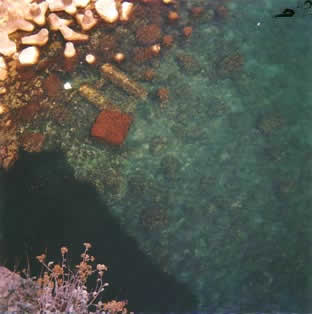 |
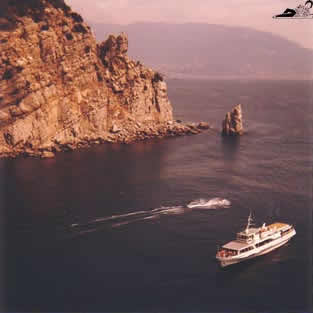 |
View from the same place across the bay and to the coastline, towards Yalta. The small rock at the bay’s end is called the "Sail" and figures in several poems about the Crimea. |
Sevastopol
Sevastopol was founded in 1783 on the site of an old Greek settlement, Khersones. In – then Byzanthian – Khersones the Grand Duke of Kiev Vladimir Svyatoslavich who introduced Christianity to the Kievian Rus, the first Russian Empire, converted to Christianity in 988. Later, in the time of the Crimean Khanate, the town was left to Venetian merchants who fortified it and used it as a base for their trade. Beside it a Tartar settlement existed, with the name Akhtiar.
Sevastopol, initially just a fortress, was from the very beginning dedicated to be a military harbour. It has preserved this character uninterrupted for about 200 years. Twice it was the scene of bitter fighting: in the Crimean War and in World War II. It was conquered by the German Army in 1942 and re-conquered by the Red Army in 1944. A woman in Sevastopol who had lived there in wartime told me she was evacuated from Sevastopol in 1941 and when she returned in 1944 there was one single building standing in the city that was not destroyed or severely damaged: the central Post Office.
From this one can conclude that all he sees in Sevastopol has been built or reconstructed after 1945.
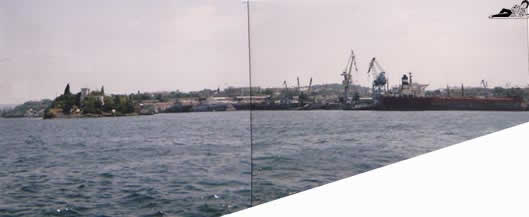 |
| The main harbour in the big bay of Sevastopol. The strategic importance of this city is to be found in the various narrow and long bays with considerable depth that stretch from the main bay of Sevastopol into the mountaineous coastline. There ships can well be hidden, kept and repaired. They are protected from storms, still when needed, they are in a central place of the Black Sea. |
After 1945 Sevastopol became the base of the Black Sea Fleet and a "closed city". Like many other places in Soviet Union that were considered of crucial importance to the country’s defense foreigners were not allowed to enter it, and Soviet citizens could only enter it with special permits. Any kind of tourism, both national or international, was impossible. Even those who were given special permits could only obtain them if they had relatives in town or if they were working there. These permits were furthermore restricted in quantity, both in numbers of the individuals they were issued to, and in length and frequency.
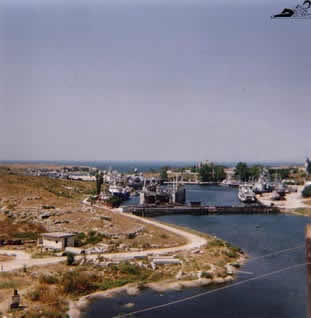 |
One of the smaller bays in the Sevastopol area
|
This passage, at least in Soviet times, was called Marat street |
The inhabitants of Sevastopol who were generally either employed by the military, by industries connected to it, or by the city administration, were compensated for the isolation imposed upon them by exceptional good supply, generous welfare services, a variety of cultural institutions, and a very clean, orderly and well functioning city.
Even when I visited Sevastopol in 1996, already as part of Ukraine and accessible to the public for more than a year, it still presented itself as an agreeable exception compared to other Ukrainian towns as far as cleanness and the reliability of public transport was concerned. |
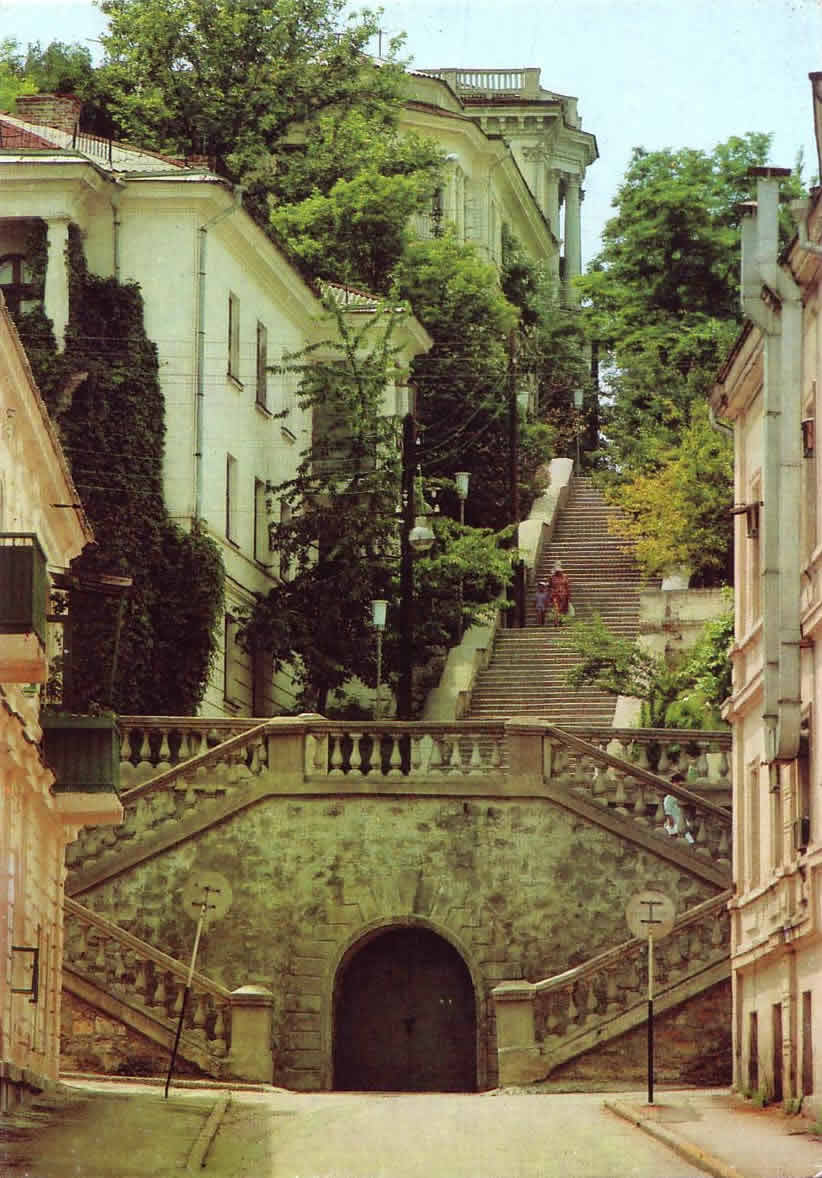 |
The status of Sevastopol started to become a big issue after Ukraine declared independence in 1991. Sevastopol, as the base of the Black Sea Fleet, had never been incorporated into the Ukrainian administration. It’s destiny had been linked to the one of the fleet. After Ukraine declared independence, the city became entangled in the political-military dispute between the two countries.
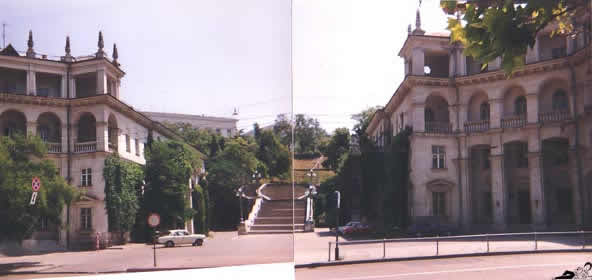 |
A place in Sevastopol, near the seaside promenade |
The Black Sea Fleet was too big for Russia’s ambitions after it renounced from being the 2nd World Power. But it didn’t want to reduce it because no country of that importance would like to restrict itself. Ukraine would have liked to play an important military role in the region but had no means to finance such ambitions. Finally an agreement was reached, Russia ceded Sevastopol to Ukraine, the fleet was divided between Russia and Ukraine and Russia transferred it’s part of the ships to the Russian Black Sea port of Novorossiysk, on the eastern shore.
Sevastopol has been opened to the public only in 1995. It’s military importance has considerably diminished. The city is now trying to make civil use of it’s military industry and attract tourists as an additional source of income.
Feodosia
Feodosia already in it’s name preserves the Greek heritage of the Crimea. It was founded by Greek settlers in the 5th or 4th century BC and served as a port connecting the Crimea to the motherland, ensuring it’s supply with grain. Some centuries later the settlement fell into oblivion and reemerged in the medieval as the Italian fortress of Kafa. Kafa’s decline in the 15th century was a consequence of the decline of the Italian merchant republics, and the town was taken over by the Crimean Tartars.
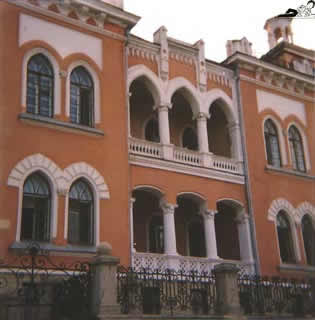 |
Building at the sea promenade |
As Crimea became part of Russia no special role was given to Feodosia. It’s Greek name was reestablished, as in general Catherine the Great had a faible for Greek names for the settlements in the new Black Sea possessions. She wanted to picture the Russian Empire as a kind of legal successor of ancient Greek culture and the powerful guardian of orthodox Christianity.
A street in Feodosia preserving the Greek atmosphere |
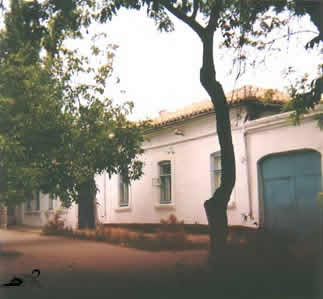 |
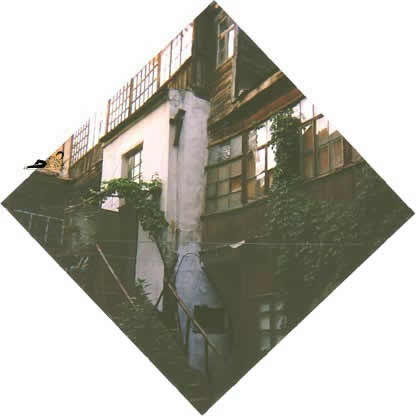 |
A courtyard in Feodosia, very typical for the towns on the Crimean coast. |
No idea what that is but it looks really nice. Perhaps the entrance to a museum? |
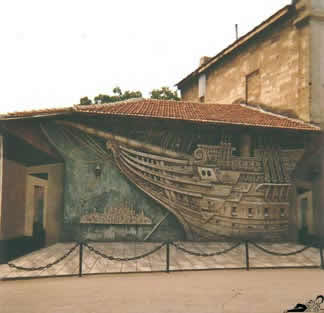 |
Feodosia had and has no special importance, and that’s the good thing about it. It is not an administrative center, as Simferopol, the Crimea’s capital. It is no army base, as Sevastopol, nor is it a big industrial or commercial center. It’s just a place to live, or to visit.
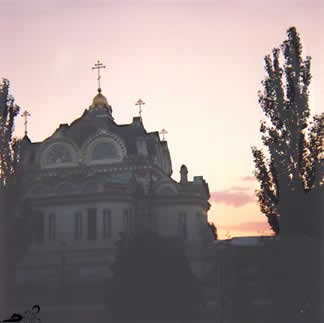
Gurzuf
| Gurzuf is a village on the coast northeast of Yalta whose roots also go back at least to Byzanthian times when it’s now ruinous fortress was built. The writer Chekhov had a house here, situated on a ridge between two bays, with views into both of them. Certainly very inspiring. | 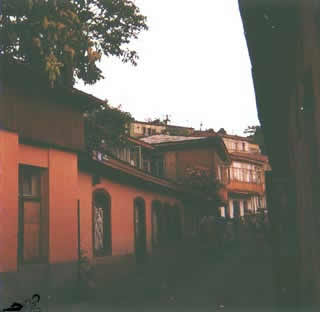 |
Before him Pushkin already stayed and was inspired, too. Little is to be found out about the Tartar heritage of the settlement though it is certainly present in it’s architecture.
 |
The Uspenskii monastery near Chufut-Kalé
The cave-located Uspenskii monastery was founded in Byzanthian times and maintained it’s function under Tartarian rule. In Soviet times it was closed but now it has been reopened, restored and enlarged. When I was there in 1996 construction was still on the way but by now it’s certainly functioning again as a monastery, with lots of incense pasing through the cave rooms and halls.
The Uspenskii (= Assumption) monastery seen from across the ravine. The small houses at the bottom, behind the trees, were evidently built in recent times in order to house the workers engaged in the construction works. |
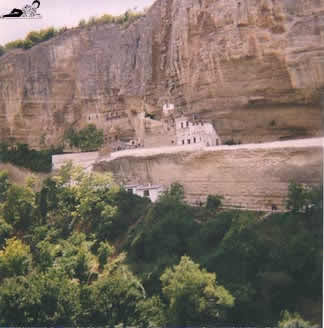 |
The revival of the Uspenskii monastery has to be seen in connection with the general resurgence of religion and the orthodox churches in Russia and Ukraine. First, after the collapse of communist ideology in all postcommunist many people looked for a new belief to cling to and happily fell back on the old opium. Second, the governments of these new states also foster the national religious institutions, churches, monasteries, educational facilities, both by changing legislation favouring the church and by massive funding, as they consider the church a means of appeasement of the discontent masses and a reliable source of mental control of their population.
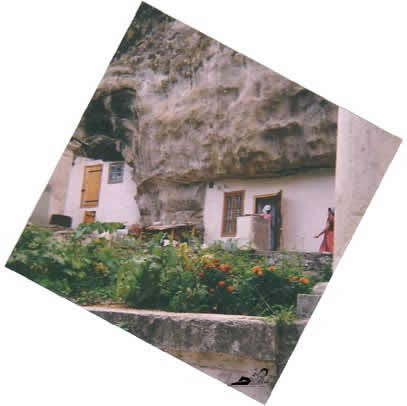 |
Detail of the residential part of the cave monastery. |
(Photographs from 1996. Report written in 2005)